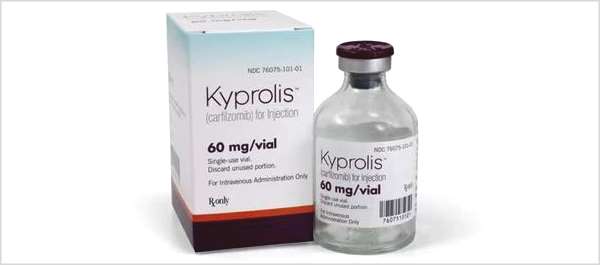Leave a Comment:
6 comments
Hi David,
Thanks for the wonderful resource. My mother has had MM for 10 years now and has seemingly run out of treatment options. Daratumumab had been keeping the disease at bay for the the last couple of years but no longer seems effective. She had a terrible reaction to Velcade and has tried pretty much every other available option. The MM is really starting to destroy her bones and she just broke her right arm, this only months after breaking her femur which did manage to heal though. I was hoping she could get in a CAR T-cell trial but she know longer is mobile enough to care for herself which seems to be a requirement of clinical trials. Any suggestions on where we go from here? Her diet/supplementation/holistic therapies are pretty much non-existent. I did try and get her to take curcumin but she had a bad reaction to it. I have her taking some liquid THC oil, which does seem to help with her nausea. Any advice is greatly appreciated.
Kip
ReplyHi Kip-
I am sorry to read of your mom’s MM situation. The therapy options I can suggest are:
1) evidence-based integrative therapies- (therapies shown to enhance conventional therapies)
2) alternative therapies- the challenge with alternative therapies such as antineoplaston therapy (ANP) and poly MVA, for example, is that there is little if any evidence of efficacy. There may be individual testimonials but no large studies.
Hang in there,
David Emerson
ReplyThanks for the prompt reply David. Are there any particular therapies you know of that work well to combat extremedullary plasmacytomas?
ReplyHi Kip- Two things. First, systemic chemotherapy is designed to eliminate all lesions, in bone and out. However, if systemic chemo is no longer an option, consider local radiation. This would be “palliative” meaning it is not curative therapy but my sense is that you are working at individual problems right now. Talk to your oncologist and or a radiologist.
ReplyDavid how were you able to survive this long with MM?. I have had the disease for about 2.5 years and it has been a tough time to just survive this long. I am only 58 years old and in good health before my diagnosis in 2017.
ReplyHi Tom,
I am sorry to read of your MM diagnosis. A proper reply to your question about how have I managed to live with MM since 2/94 is too long for this reply. However I will say that, in a nutshell, I think and act as though conventional MM oncology has it wrong.
By wrong, I mean that standard-of-care therapies try to cure the patient of his MM. Therapies like induction, ASCT and maintenance are toxic and cause a great deal of damage to the MMer. I think that MMers should eat, supplement, exercise, live, etc. evidence-based, non-toxic MM therapies.
Which is what I do.
Hang in there,
David Emerson
Reply



